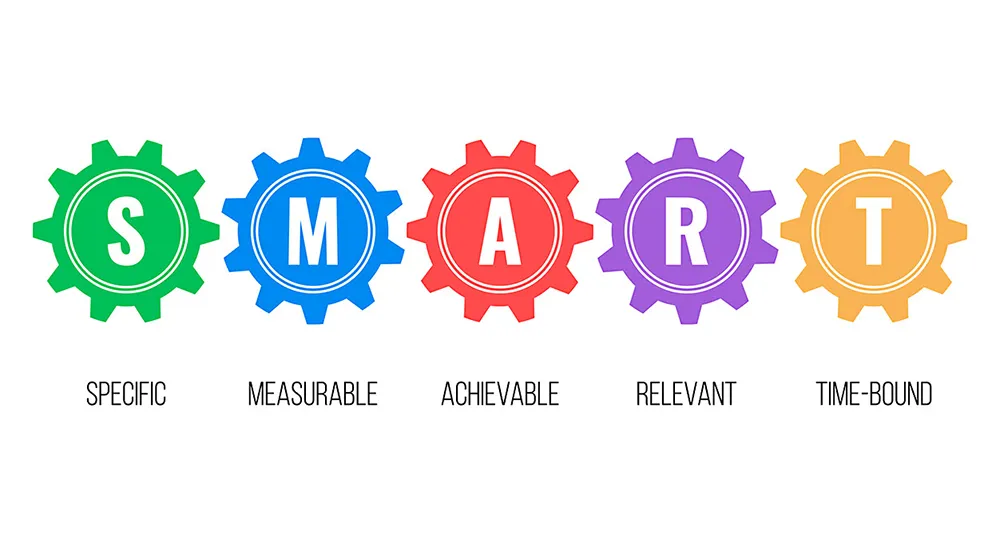
Ted Scott
March 12, 2024
The development of any business starts with setting goals. Any company plans to achieve maximum profit and profitability in the long term. But how to achieve this is not always clear at the initial stages. Therefore, any planning needs to be clearly structured. An effectively working structure will answer the most important questions: How will responsibilities be allocated? How will the interaction between performers be organized? Who will be responsible for the end result? The simplest and the most simple and working way to organize the organizational structure of the company is the goal tree. What this method is and how to use it in practice, let’s look at it below.
What it is and how it works
Organizational goal tree is a management technique aimed at achieving a global goal through the progressive implementation of its constituent tasks. This planning technique was developed in 1957 by the American scientist Russell Lincoln Ackoff. Due to the simplicity of execution, it quickly gained popularity in business circles. The method has not lost its relevance and is now widely used in management for planning tasks.
In essence, an objective tree is a graphical representation of the main objective divided into several smaller sub-objectives - branches of the tree. They are arranged in a hierarchical structure and are in direct connection with each other. The solution of each objective is followed step by step by the fulfillment of the next one, connected with it. By climbing up the steps one by one, it is easier to achieve the main, strategic goal.
The tree of goals is used in the development of new products, in planning business development strategy, in marketing. It is suitable for personal goals. The methodology helps:
-
Determine the shortest and correct path to achieve the outcome.
-
To unite all the company’s goals into a harmonious, effectively functioning structure, which has the form of a visual graphic system.
The trunk of the tree is the main problem to be solved in the perspective. Its branches are the first, second, third and subsequent level tasks, the solution of which leads to the solution of the set problem.
Signs and characteristics of the approach
The goal tree in management has the following characteristics:
-
Hierarchy of organizational goal construction.
-
A graphical model of its development strategy in which all elements are linked.
-
Having long-term goals for the company.
-
A complex system of tasks of different levels.
The attributes of the objective tree include laconism. There is nothing superfluous in its structure. Another important criterion of the method is individuality. Each enterprise or individual has its own unique form of objective tree.
Structure and principles

This methodology was named after the scheme resembling an inverted tree. The principles of tree construction were formulated by one of the algorithm developers, Herry Adler:
-
The main idea is put in the upper part, under it place auxiliary tasks that need to be performed on the way to its achievement.
-
Targets on the lower tier are always subordinate to those above.
-
Each completed task contributes to a larger goal. And so on, in order.
-
Lower-order goals are derived from higher-order goals. Inferior goals are objectives in the form of planned actions.
When creating a project goal tree, three basic goal elements apply:
| Expression, description | Size, scale | Execution time |
|---|---|---|
| What should be the result? What needs to be done? | What quantity (volume, percentage) are we aiming for? | By what deadline do you need to accomplish what you have planned? |
The top or trunk, sometimes called the root, is the main part of the tree, the key goal at the top. From it come large and small branches, representing different goals and objectives. The larger branches are the first level objectives, the smaller branches are the second, third, and beyond, i.e. the specific steps that are taken to achieve each objective.
The number of steps can be any number of steps. The more detailed each step of the plan is, the easier and faster it will be to accomplish. For example, “learn Spanish” may seem vague and vague. But when it is broken down into individual steps: “find a course, enroll, complete assignments, practice,” the goal becomes clearer and seems achievable. When all the above steps are graphically displayed, the process of moving towards it becomes even clearer.
The trunk is the main target
The main, strategic goal - the “trunk” - should be quite complex and ambitious. Significant efforts and resources should be spent on its achievement. Its function can be performed by:
-
Company mission (what the business is aiming for). For example, to develop a new direction in the field of cosmetology in your region to make people beautiful and happy, to manufacture premium interior and entrance doors at affordable prices.
-
Solving a specific problem related to the company’s operations. Example: Increasing profitability by a certain number of percent, lowering production costs, reducing production costs.
-
Launching a new project, product or technology.
-
A specific reference point in the work. For example, to create the most popular fast food café chain in the city.
A strategic goal should be motivating and inspiring. After all, every effort will be made to achieve it. If the roots are weak, i.e. if there is no motivation to accomplish tasks or if they are unattainable, the tree itself will be weak and unimpressive.
Branches - tactical targets
The final realization of a strategic goal can take a long time, on average 10 years or more. The tactical objectives - or branches of the tree - explain what steps need to be taken to get closer to it.
The large branches of the tree are also large-scale tasks. Their function is to concretize, to make clear the process of moving towards what is planned. They are peculiar directions along which you need to move progressively in order to get closer to the solution of the global problem. For example, it is possible to increase profit in two main ways: by increasing the number of sales or reducing the cost of producing goods. It turns out that these two directions will be the big branches of your company’s tree. Developing a plan to achieve the result, you should not forget about alternative options for solving the problem. As the third branch of the tree, you can choose “early repayment of loans” or “reducing the debt load” of the company.
Small branches, leaves - current tasks and actions
Let’s go back to the example with the “trunk”, denoting an increase in the company’s profits. The first level goals come from it:
-
increasing sales volume;
-
reduction of production costs and expenses;
-
deleveraging.
It’s time to move on to developing concrete steps to achieve them. You will need to take the following actions to increase your sales:
-
analyze the market situation;
-
to adapt the marketing strategy to the existing conditions on it;
-
optimize the advertising budget;
-
work on opportunities to win new markets;
-
develop an effective system of product promotion in the form of advertising campaigns, promotional campaigns or other methods.
You can reduce the cost of making a product as follows:
-
find new suppliers working on more favorable terms;
-
to modernize production;
-
clean up staffing levels by cutting unnecessary positions;
-
try to get additional discounts on bulk orders of raw materials.
In order to reduce the debt load, it is necessary to pay off loans with the possibility of early repayment, to think about attracting alternative sources of financing. For example, lease or sell unused facilities. Repay the loan ahead of schedule for the amount received.
Stages and rules of goal tree construction

The construction of the tree is done from top to bottom.
1. Development of the mission of the enterprise
First of all, the global goal or problem to be solved is formulated. The final result will depend on its accuracy and correctness. This is the top or trunk of the future tree, reflecting the main guidelines of the company’s development. You cannot use ready-made templates to formulate it. The main strategic goal should be unique for each company. At this stage, the main thing is to decide what we want in order to follow it successfully.
2. Decomposition of the strategic objective
After assessing the resources and the current situation, the global goal is divided into more precise branch tasks. For this purpose, each branch is described as clearly and in detail as possible. At this stage, you need to answer the questions: “In what directions do we need to move? How do we plan to achieve the result?“
3. Dividing large tasks into subtasks
All tasks consist of actions, i.e. activities that need to be performed to realize the intended plan. You set a goal: to increase the number of subscribers to one million people. To do this, you need to perform the following actions:
-
Develop and publish a post inviting people to subscribe.
-
Launch an online advertising campaign.
-
Hand out flyers or other promotional products to potential subscribers.
4. Creating detailed descriptions for complex tasks
Sometimes solving large tasks gets complicated due to various factors. This is usually due to the fact that many small steps are required to accomplish one action. For example, creating a post for social media seems like a simple process, but in order to accomplish it, you need to do the following:
-
Thinking through the theme.
-
Develop a plan.
-
Write text.
-
Come up with a “catchy headline” for it.
-
Select an image or photo.
-
Check for errors.
-
Spell out hashtags.
-
Submit for moderation, publish.
All of the above steps are elements of a single action that requires a lot of resources and time. When work is done in a team, it is important that everyone involved in the process understands his task. This will help to delegate tasks to employees and avoid wasting time.
The following criteria should be considered when developing a tree model:
- Needs and Resources.
When formulating a general goal, it is important to understand that it is what you or your company needs. At the same time, it is necessary to make a sober assessment of whether you have the appropriate resources to realize what you have in mind. The goal tree will show the real picture of things. By detailing the tasks included in it, it is easier to identify ways to achieve them.
- Concretization.
In describing the objectives, it is necessary to establish the criteria by which they will be evaluated. For each objective, a precise time frame for completion is defined. Deadlines should be specific and realistic. Example: “Accumulate 2 thousand dollars in a month”. With a salary of 2 thousand, this is physically impossible. But the goal: “to accumulate 2 thousand by October 20, 2030” is already quite achievable.
- Compatibility.
All tasks and goals of the tree, forming its trunk and crown, should be connected with each other. If there are contradictions between them, it means that critical errors have been made in the construction of the scheme.
- Relevance to the company structure.
If the goal tree is built for business development, its structure should correspond to the peculiarities of the company’s activity. Each department or division must achieve its goals to realize the chosen strategy.
Examples of goal tree construction

For career advancement
Anna’s goal is to advance in her career:
| Strategic goal | Head of Sales position. |
|---|---|
| Sub-objective | Re-execute the plan to be able to apply for a competitive bid to fill a vacant position. |
| Task | Analyze sales bottlenecks, improve performance. |
| Sub-objective | Receiving an invitation for an interview. |
| Task | Build a spectacular and competent portfolio. |
| Sub-objective | Successful completion of an interview. |
| Task | Prepare a self-presentation, write a speech. |
To improve financial well-being
| Strategic goal | Improved financial position |
|---|---|
| Sub-objectives | Organizing passive, active income, personal luck. |
| Tasks | Change jobs, professions, take further education courses, move to a new place. |
Using this analogy, the graph is further constructed. The number of rows may vary depending on the scale and level of objectives.
Building a goal tree in LeaderTask

You can build your own tree of goals and objectives manually, on an ordinary sheet of paper. Or you can use modern digital services, such as LeaderTask. The program helps businesses visualize their plans and aspirations. It offers a clear planning algorithm that ensures the progressive fulfillment of all planned tasks and long-term goals.
Using LeaderTask, you can quickly make changes to the plan structure. Inform employees of changes in a timely manner. Restrict personnel access to the tree if necessary. In the application you can create to-do lists, divide them into tasks and subtasks. Form a tree-like hierarchical structure to achieve complex goals. Tasks and subtasks can be divided by day. You can mark completed tasks and track progress towards your goals.
The program visually displays at what stage a task is at. Demonstrates who is responsible for which area. Organizes employee interaction in the corporate chat room. Works on all digital platforms, including offline, without internet.
Conclusion
Using a graph to plan the activities of a company or personal business, it is easier to understand what tasks need to be accomplished at a given stage and what resources to attract to achieve the goals as soon as possible. This method helps to discover missing resources and find the best ways to obtain them. Shows how tasks and subtasks are related to each other. It allows global, tactical goals to become real and achievable. You can successfully use the objective tree methodology in business or in your personal life.








